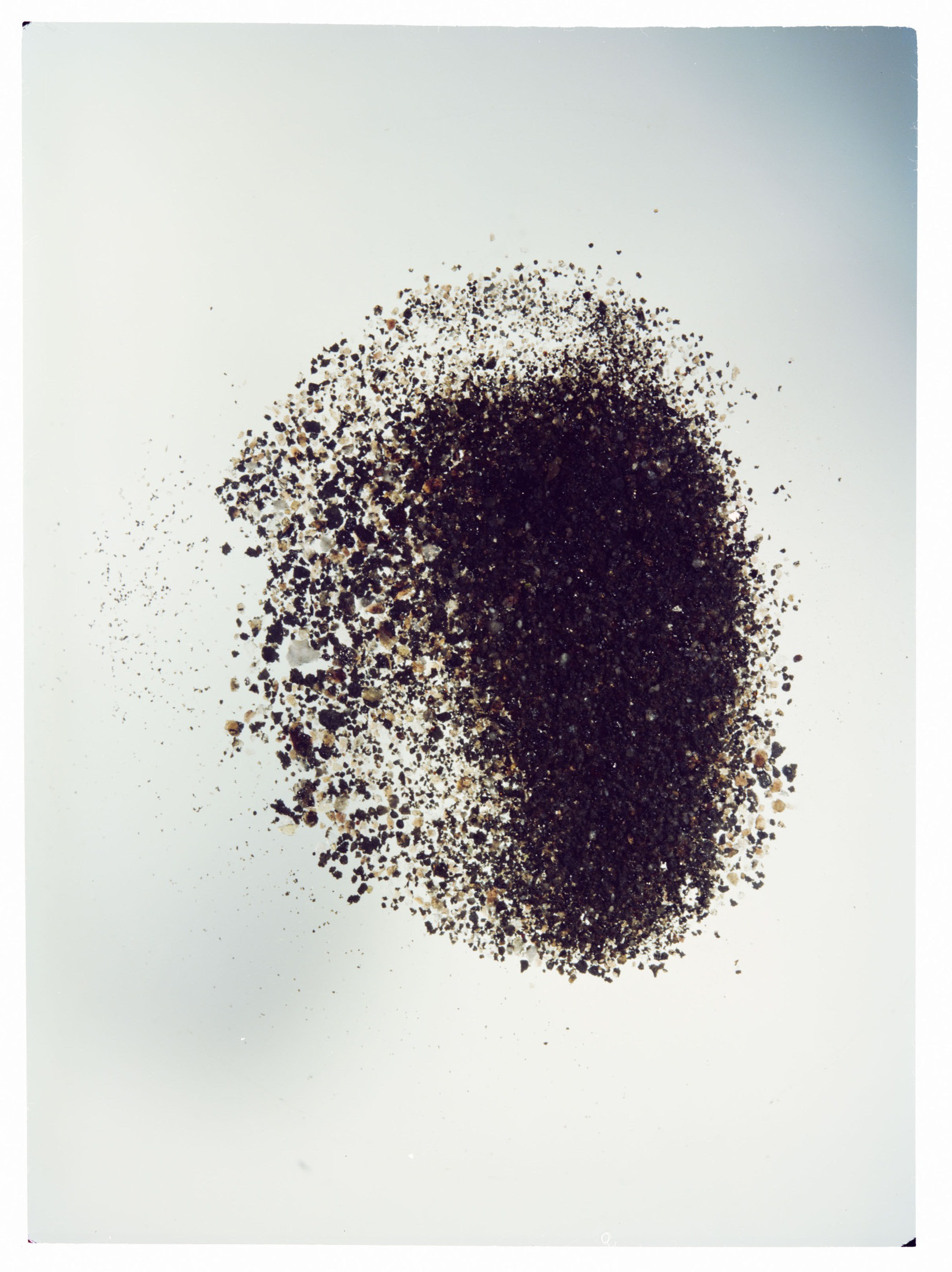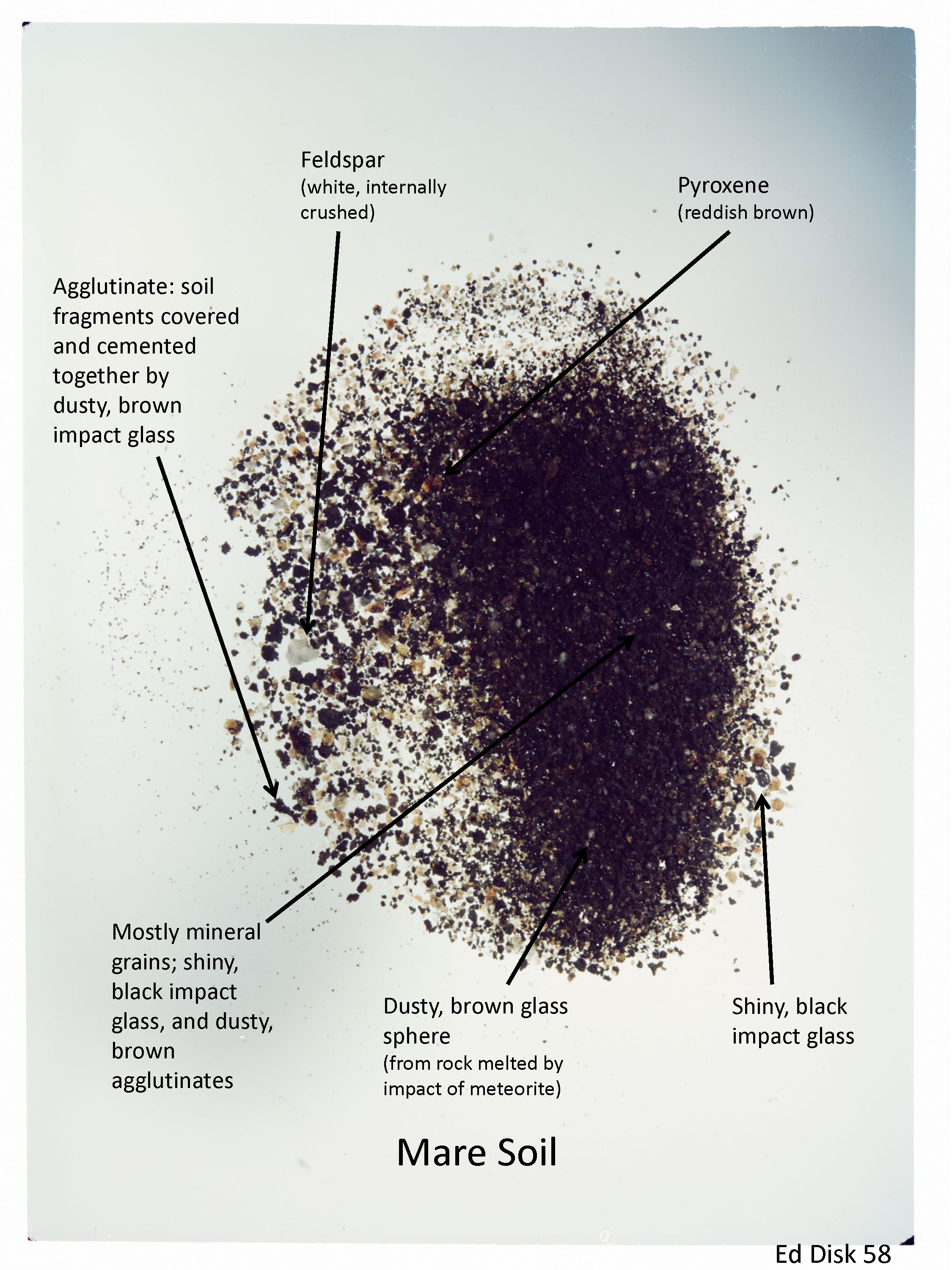Lunar Disk 58: Mare Soil
The fragments composing this soil were produced by meteorites hitting basalts like the one in this disk. The most abundant mineral grains are feldspars and pyroxenes, just as they are in basalts.
The meteorites not only broke the basalt into pieces, but also shocked (crushed without breaking) some of the minerals and melted others to produce glass.
Feldspar, which is light gray and clear in basalts, turns white when it is shocked. Liquids from impact melting are thrown into space (there is no air on the Moon) and quench to glass spheres, or splash onto rocks or grains in soil.
This sample consists of the coarser fragments obtained by sieving a portion of sample number 75081, which weighed 1457 grams (3.2 lbs.). The sample was collected in 1972 on the Apollo 17 mission, the last visit by humans to the Moon.


